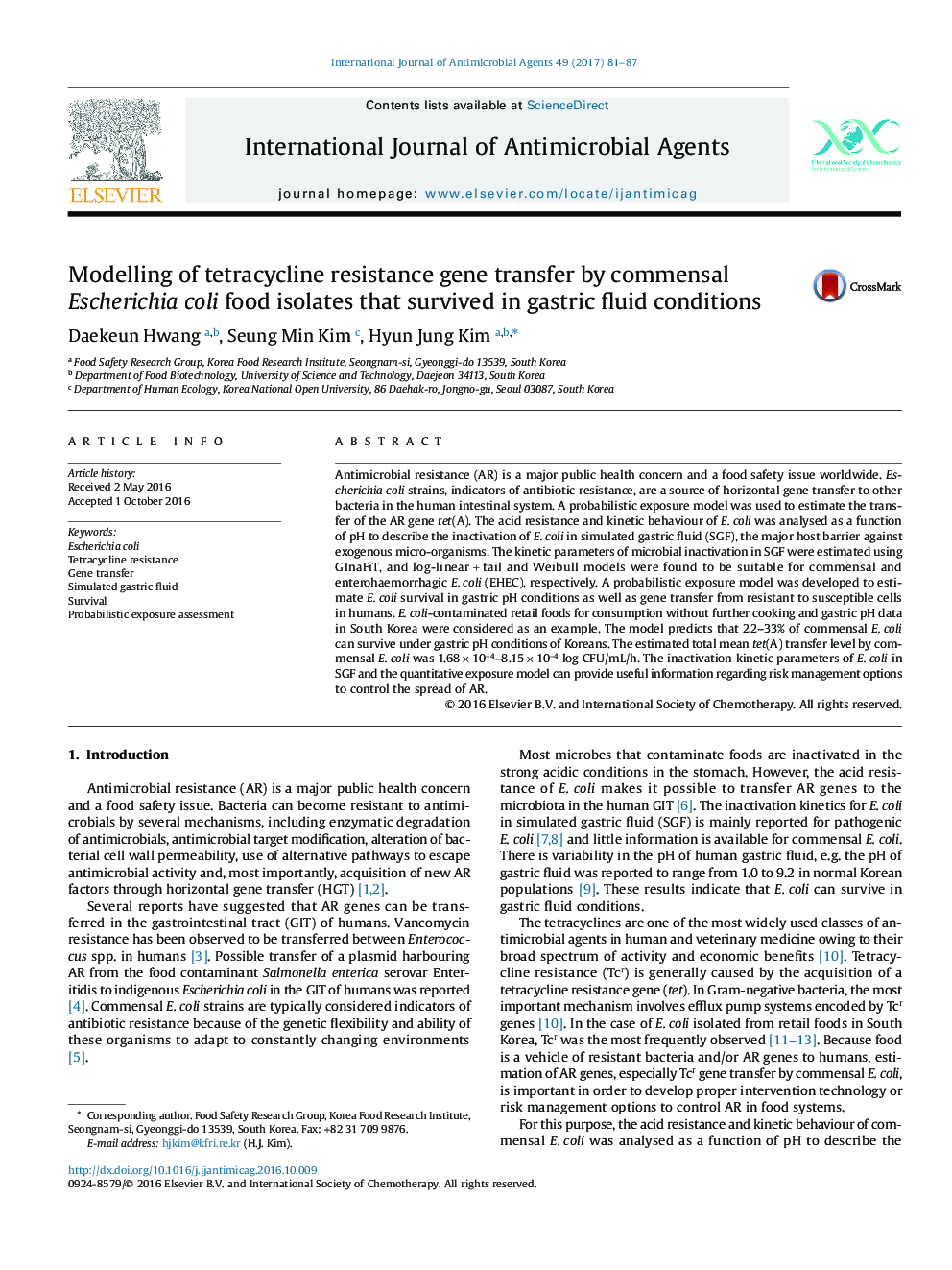| Article ID | Journal | Published Year | Pages | File Type |
|---|---|---|---|---|
| 5667090 | International Journal of Antimicrobial Agents | 2017 | 7 Pages |
â¢Probabilistic exposure model was used to estimate antimicrobial resistance gene transfer in the human gut.â¢Acid resistance and kinetic behaviour of E.âcoli survival were analysed in gastric pH conditions.â¢Simulation results suggest that 22-33% of commensal E.âcoli can survive under gastric pH conditions of Koreans.â¢Estimated mean tet(A) transfer rate by commensal E.âcoli was 1.68âÃâ10-4-8.15âÃâ10-4 log CFU/mL/h.
Antimicrobial resistance (AR) is a major public health concern and a food safety issue worldwide. Escherichia coli strains, indicators of antibiotic resistance, are a source of horizontal gene transfer to other bacteria in the human intestinal system. A probabilistic exposure model was used to estimate the transfer of the AR gene tet(A). The acid resistance and kinetic behaviour of E.âcoli was analysed as a function of pH to describe the inactivation of E.âcoli in simulated gastric fluid (SGF), the major host barrier against exogenous micro-organisms. The kinetic parameters of microbial inactivation in SGF were estimated using GInaFiT, and log-linearâ+âtail and Weibull models were found to be suitable for commensal and enterohaemorrhagic E.âcoli (EHEC), respectively. A probabilistic exposure model was developed to estimate E.âcoli survival in gastric pH conditions as well as gene transfer from resistant to susceptible cells in humans. E.âcoli-contaminated retail foods for consumption without further cooking and gastric pH data in South Korea were considered as an example. The model predicts that 22-33% of commensal E.âcoli can survive under gastric pH conditions of Koreans. The estimated total mean tet(A) transfer level by commensal E.âcoli was 1.68âÃâ10-4-8.15âÃâ10-4 log CFU/mL/h. The inactivation kinetic parameters of E.âcoli in SGF and the quantitative exposure model can provide useful information regarding risk management options to control the spread of AR.
